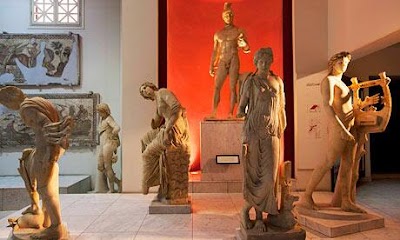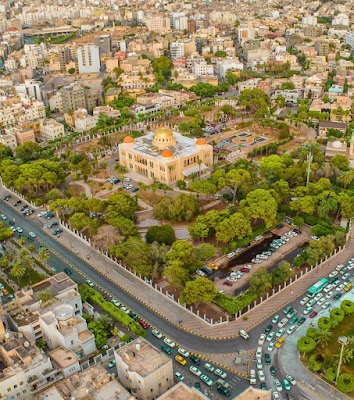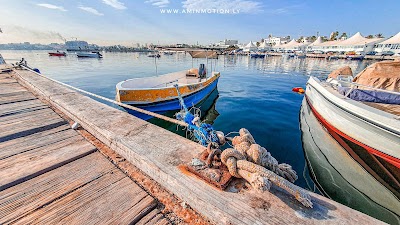National Museum of Libya (المتحف الوطني الليبي)
Overview
The National Museum of Libya, often referred to as the Red Castle Museum, is a captivating destination for history enthusiasts and curious travelers alike. Located in the heart of the Tripoli District, this esteemed museum provides a fascinating glimpse into Libya's rich and diverse cultural heritage. Housed within the historic Red Castle (As-Saraya Al-Hamra), a fortress steeped in history, the museum serves as a stunning backdrop for the many historical treasures it showcases.
Entering the National Museum of Libya is like embarking on a remarkable journey through time. The museum's extensive collections are meticulously curated to illustrate the multifaceted history of the region, spanning from prehistoric times to modern eras. As you stroll through its halls, you will encounter an impressive array of artifacts, including ancient pottery, beautifully crafted jewelry, intricate mosaics, and monumental statues. These exhibits are thoughtfully arranged to reflect the civilizations that have shaped Libya, such as the Phoenicians, Greeks, Romans, and Byzantines.
A highlight of the museum is its remarkable collection of classical antiquities from the ancient cities of Leptis Magna and Sabratha. Once a thriving center of the Roman Empire, Leptis Magna is famous for its well-preserved ruins, many of which are on display in the museum. Visitors are often awestruck by the craftsmanship and cultural significance of these relics. Likewise, artifacts from Sabratha, another Roman city celebrated for its stunning architecture and theater, offer a captivating glimpse into the opulent lifestyles of past eras.
The National Museum of Libya also explores the Islamic period, showcasing an array of Islamic art and manuscripts that reflect the religious and cultural advancements of the time. Visitors will be enchanted by the intricacy of Islamic calligraphy, the beauty of ceramic tiles, and the craftsmanship of ancient coins. These exhibits highlight the profound impact of the Islamic Golden Age on Libya's history and cultural identity.
In addition to its historical artifacts, the museum places a strong emphasis on Libya's more recent history. Sections dedicated to the Italian colonization and the struggle for independence are particularly poignant, offering insights into the resilience and determination of the Libyan people in their fight for sovereignty. The museum also features modern art and cultural pieces that mirror contemporary Libyan society, providing a comprehensive narrative that spans millennia.
The architecture of the Red Castle itself is an attraction worth noting. Strategically located overlooking the Mediterranean Sea, the fortress has served various purposes throughout its history, from royal residence to military stronghold. Its thick walls, picturesque courtyards, and stunning views enhance the overall experience of visiting the museum. The adaptive reuse of the castle as a museum ensures that its historical ambiance is preserved and appreciated by all visitors.
For foreign tourists, a visit to the National Museum of Libya offers a rare opportunity to delve into the depths of a nation's past within a setting that is both educational and visually striking. The museum's prime location in the Tripoli District makes it easily accessible, with the surrounding area rich in additional attractions, including historical sites, bustling markets, and delectable culinary delights.
In conclusion, the National Museum of Libya in the Tripoli District is much more than a collection of artifacts; it is a cultural institution that narrates the history and heritage of Libya through its well-preserved treasures. From ancient civilizations to modern times, the museum's diverse exhibits weave a rich tapestry of stories that captivate and enlighten visitors. Whether you are a history buff or a curious traveler, this museum is an essential stop that promises to deepen your understanding and appreciation of Libya's past and present.






